Hoppers, locust & crickets
{{start}}
here are more hoppers flies out there than there are actual hopper verities and you can carry a few of each if you like but I have opted to carry just three patterns that work well in most situations. There are of course a couple of flies in my dry fly selection such as the elk hair caddis, claret daddy or humpy that fill any perceived gap in my hopper selection.
{{end}}

{{+1}}Claret hopper{{-1}}
{{start}}
A popular fly in the United Kingdom this fly is equally at home early and late in the season in Australia. We don't have any burgundy coloured hoppers that I am aware of but this buggy looking fly often works when the first and last of the seasons terrestrials are around. Whilst not a strong floater this fly ticks all the boxes for those that want an enticing fly that will sit in the surface film.{{end}}
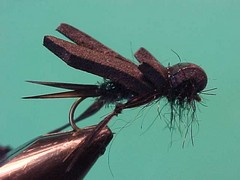
{{+1}}Foam cricket{{-1}}
{{start}}
If you fish fast water and need a very buoyant hopper or a buoyant fly to support a nymph try this one. Trout love crickets probably because that represent a pretty big serve of protein.{{end}}

{{+1}}Foam hopper – Chatto original{{-1}}
{{start}}
If you fish fast water and need a very buoyant hopper or a buoyant fly to support a nymph try this one.{{end}}
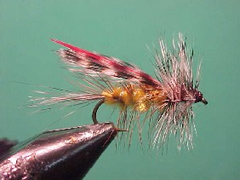
{{+1}}Glenn Innes hopper{{-1}}
{{start}}
Whilst the original tail was brown cock hackles I sometimes use grizzly cock hackles, and whilst the original body was yellow chenille ribbed with fawn chenille I prefer a yellow or fawn chenille body ribbed with a palmered undersized brown hackle and ribbed with fine silver thread. I also sometimes substitute turkey feather slips or bunched up church window feathers for the wings.{{end}}

{{+1}}Summertime hopper – Chatto’s tie{{-1}}
{{start}}
Looks great on the water and floats all day. The general form and colour together with presentation and how you fish them will help you fool the fish. Whether fished dry or wet by in large all hopper patterns should be fished in the current with as little line drag as possible or with occasional short jerking strips or twitches.{{end}}
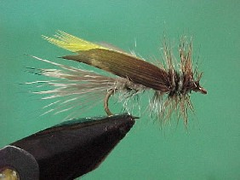
{{+1}}Chatto’s yellow winged hopper{{-1}}
{{start}}
As the name implies this hopper is my representation of the natural of the same name. Its tied in the same way as a stimulator except that a yellow under wing and feather slip wings replace the deer hair wing of the stimulator. It's a good hopper pattern to tie on because it floats in the surface film much the same way as the unfortunate natural does and it is reasonably visible.{{end}}
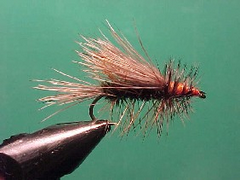
{{+1}}Stimulator variant{{-1}}
{{start}}
Whilst not tied to imitate any particular insect this down wing style of fly can be tied with your favorite materials and in your favorite colours to imitate a range of insects. It is a good prospecting fly when nothing appears to be happening. In larger sizes it can be twitched or fished dead drift to imitate a hopper, cicada or other terrestrial insect that has found itself in the water or in smaller sizes can be danced across the surface to imitate a caddis fly.{{end}}

{{+1}}Bullet nosed foam hopper – Chatto original{{-1}}
{{start}}
My bullet nosed foam hopper has a general hopper type form and function and works well in smaller sizes as a representation of a Trouser-Brace hopper or Wingless hopper and in larger sizes with a yellow foam body as a representation of a Yellow Winged hopper. The incorporation of foam and deer make this a particularly good fast water fly or a fly that will support a wet fly quite comfortably in a dry / wet two fly team.{{end}}
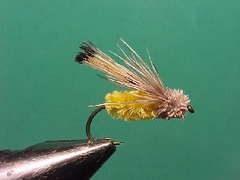
{{+1}}Nobby hopper{{-1}}
{{start}}
Whilst I don't think either the Original or any of the variants represents any of the naturals that I've seen it is a good buggy general purpose hopper pattern. If you experiment with bodies of different colored chenille, yarns and tinsel matched with different colored deer hair you can come up with combinations to suit most small hoppers.{{end}}













